
In the wake of dangerous overcrowding on the TTC, there's been renewed calls for the city to get on with building the Relief Line. If this is as bad as Bloor Station can get today, how bad might in be in a decade?
Mayor John Tory is quick to argue that he's doing everything he can to push forward the project, which is projected to arrive in 2031 despite a fully fledge funding plan, but his commitment to SmartTrack and the one-stop Scarborough Subway extension draw that into question.
But here's what should really burn. We could already have a Relief Line if transit planners and the various levels of government made good on the many proposals that have long existed to expand Toronto's transit infrastructure.
It's cruel to think about what the TTC might look like today had the political will existed to provide the city with the transit it so desperately needs. Worse, the failure to follow through draws into question the future plans that are touted today.
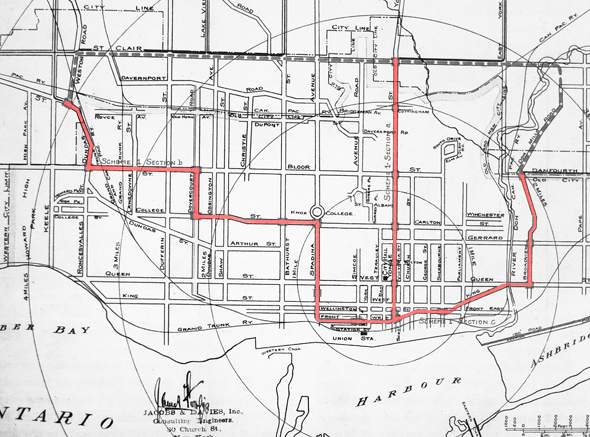
A 1910 proposal for a subway in Toronto that would service the east and west sides of the city as well as the Yonge corridor.
Yes, Toronto is good at imagining new transit futures, but not at making them happen. This has been happening since 1910, when the first meandering subway was proposed for Toronto.
If only we had really started building underground transit that long ago. We might even have a Queen subway and the Bloor-Danforth Line.
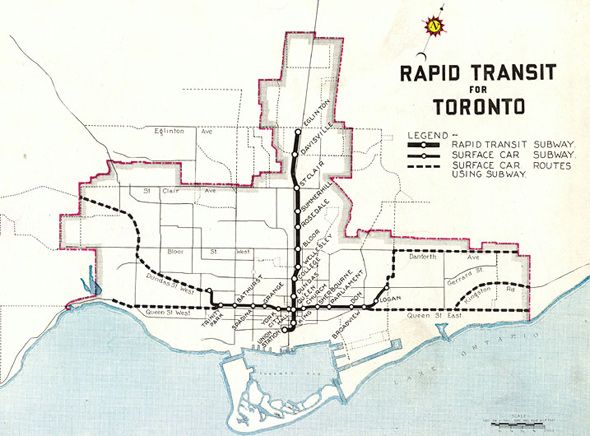
Before the Bloor-Danforth was built, the plan was to build a streetcar subway along Queen St.
The grandaddy of all of these visions would be almost seven years old now had the political will existed to push it through to realization.
Conceived in 1985 when the city realized that it was falling behind in transit infrastructure growth, Network 2011 would shuttle Toronto into the future with no less than three new subway lines.
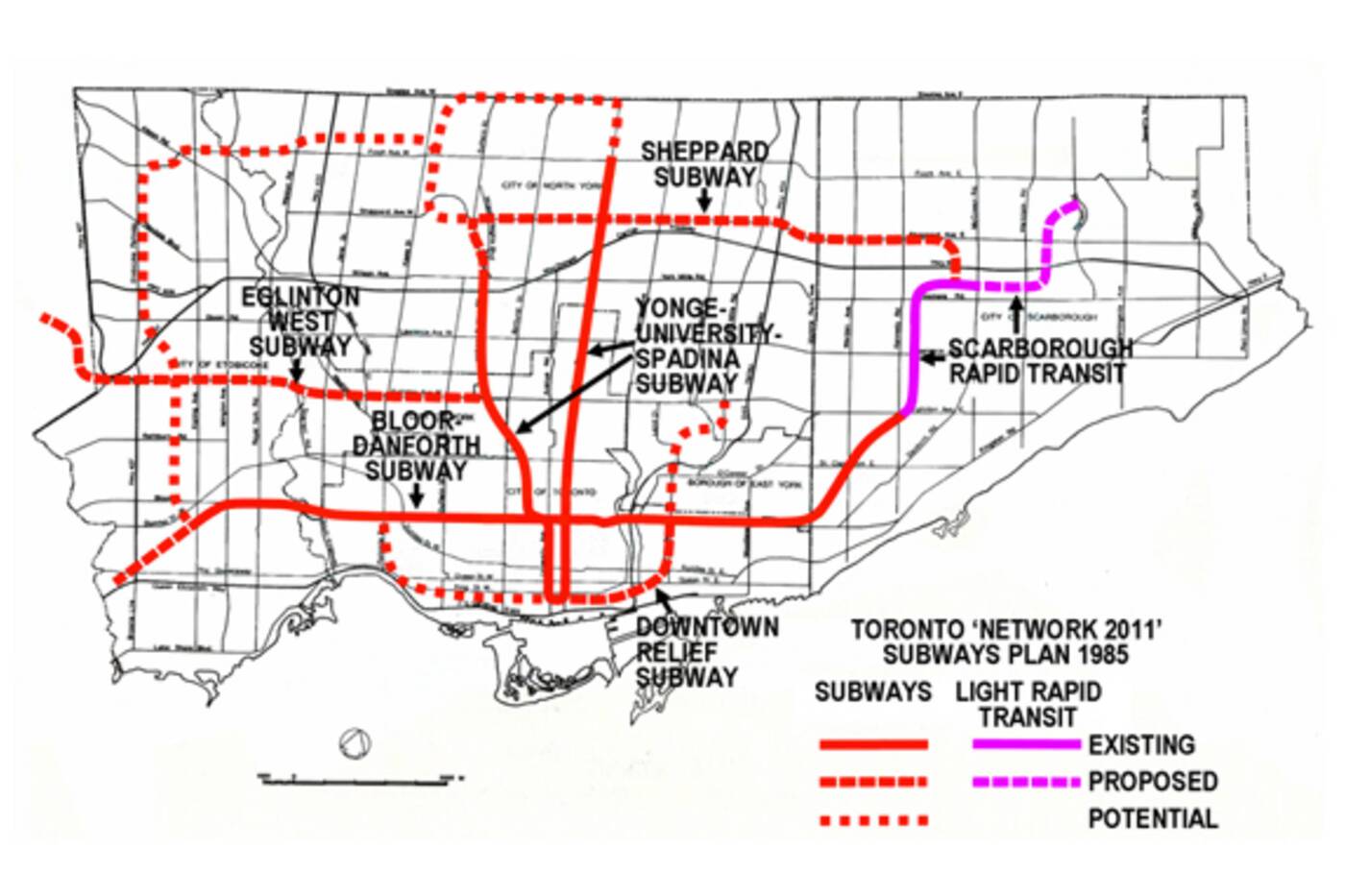
Look at all those subway lines laid out in the Network 2011 plans.
Whenever Network 2011 comes up, the project that gets the most focus is the Downtown Relief Line (DRL), but in fact this was a comprehensive package meant to help Toronto meet the transportation needs of its rapidly swelling population across the entire city.
Along with a DRL, significant commitments were made away from the core. Here's the plan in a nutshell:
The YUS Line would be extended to Downsview, A Sheppard Line would be built from Downsview to Scarborough Town Centre, Bloor-Danforth would be extended to Sherway Gardens, an Eglinton West Line would be built to the airport, the Scarborough RT would be extended to Malvern, and a DRL would be built from Union to Pape.
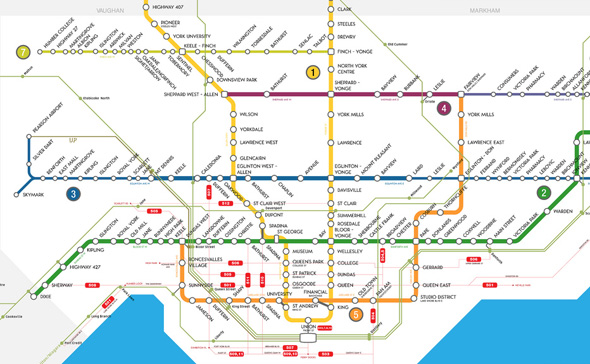
Fantasy transit maps imagine the Toronto transit that could be. This one comes courtesy of Bryan Bonnici.
Nowadays this is all sounds like the stuff of a TTC fantasy map, and yet it was very real when it was brought to the table. Yes, there was some controversy at city level, but it was changes at the provincial level that ultimately destroyed the plans.
Premier Bill Davis was on board with the plan, but trouble started when he retired in 1985. The provincial Conservatives would lose the next election to the Liberals, who quickly put Network 2011 up for review. It would never look the same after that.
Some of the plan stuck around over subsequent governments, namely the YUS extension to Downsview and a version of the Sheppard Subway. We would also have an Eglinton West subway today if Mike Harris hadn't killed that almost immediately after taking office from Bob Rae.
In other words, Network 2011 wasn't the only plan that was scrapped along the way. In fact, each time a new provincial government was elected, Toronto's transit future was re-imagined. The end result, however, was that not much of anything ever got built.
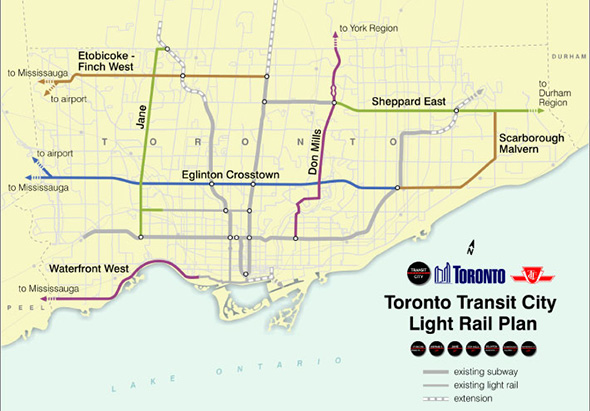
The ill-fated Transit City plan, only some of which survived the Rob Ford mayoralty.
What particularly stung about Rob Ford's attempt to kill the Transit City plan in 2010 is that support from the provincial government was strong. Metrolinx was founded in 2006 in part to provide greater stability in long term transit planning across the region, and the project was safe from a funding standpoint.
With overcrowding becoming more and more of an issue on both Line 1 and 2, it's surely tempting to shake your fist at the politicians of the past for getting us into this mess.
by Derek Flack via blogTO

No comments:
Post a Comment